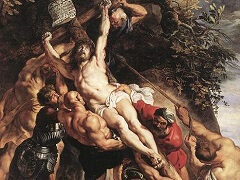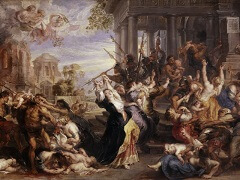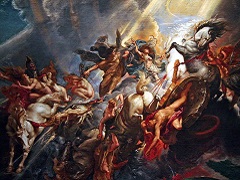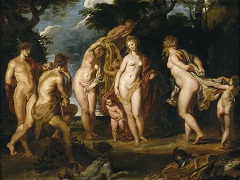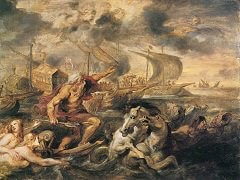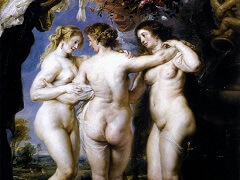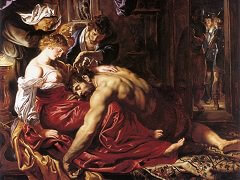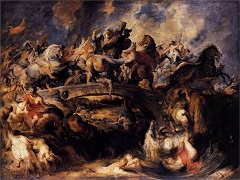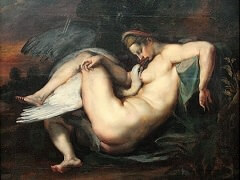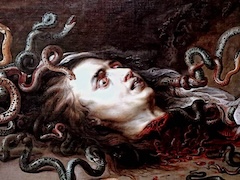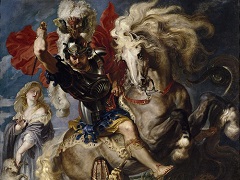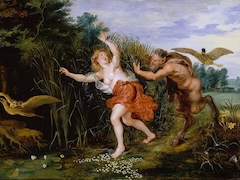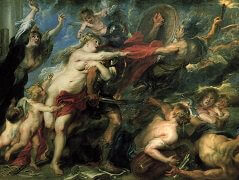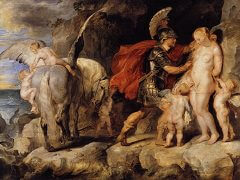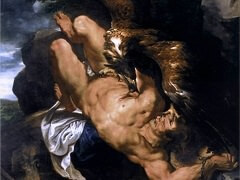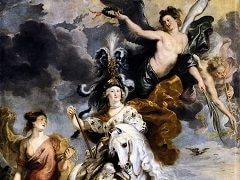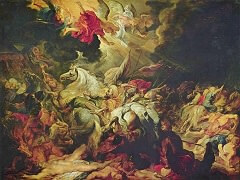Autumn Landscape with a View of Het Steen, 1636 by Peter Paul Rubens
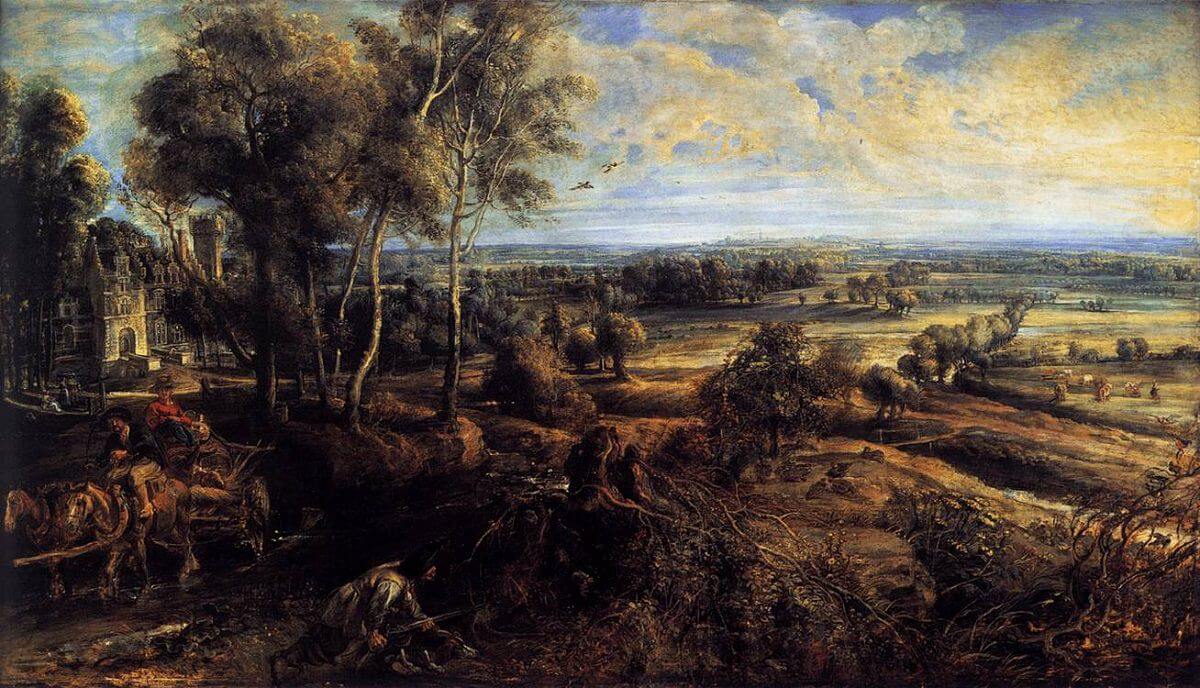
The painting shows Rubens's country chateau at Elewijt, an area of countryside between Brussels and Antwerp. It was here that he spent the last five years of his life. The chateau is called Het Steen, meaning 'stone house'. When it came up for sale it was described as: 'A manorial residence with a large stone house and other fine buildings in the form of a castle, with garden, orchard, fruit trees and a drawbridge, and a large hillock on the middle of which stands a high square tower, having also a lake and a farm... the whole surrounded by moats.'
The painting depicts a typical early autumn morning at Het Steen. A farmer and his wife can be seen leaving for market on a cart loaded with produce for sale, including a calf with tied feet. In the foreground a hunter and his sharp-nosed dog are creeping up on a flock of partridges gathered under a small tree. Further back in the fields on the right two dairymaids can be seen milking cows. If we follow the stream left from where it is crossed by a small wooden bridge, back towards the house, we can see a fisherman leaning over the wall by the moat. Perhaps he's just got a bite! Behind him a finely dressed lady and gentleman are strolling by a gate, while another woman, possibly a nurse, sits below the trees cradling a baby.
Time and light are important themes in the painting. The changes in colour which occur when late summer moves into early autumn can be seen in the trees, fruits and other plants. The early morning autumn sun shines on a landscape in which the inhabitants go about their work, appropriate to the time of day and season. Light gleams everywhere. It catches the droplets of water as they fly up from the horses' hooves splashing though the puddles in the lane. The copper cream-churn hanging from the arm of the woman riding on the cart sparkles, and the sun itself glints through the clouds. It's the beginning of a new day.
It was also the beginning of a new phase in Rubens's life when he could enjoy the fruits of his labour. However, days and seasons pass in cycles, and Rubens was coming towards the end of his days.

